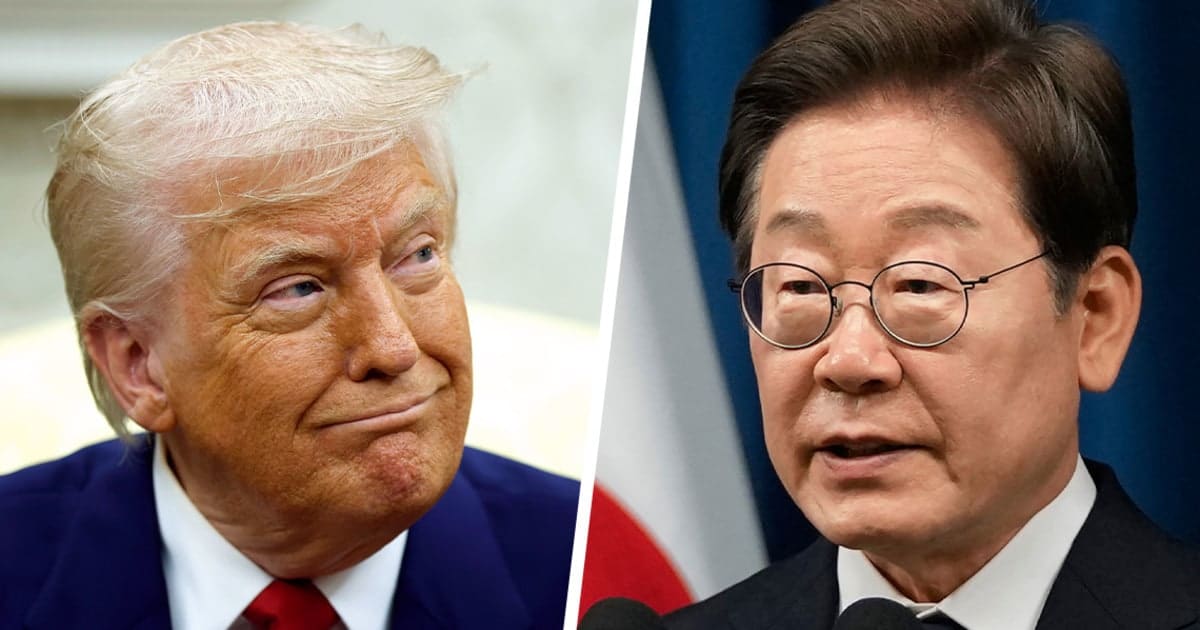South Korea’s proposal to win over Trump: ‘Make America Shipbuilding Great Again’
South Korea's Lee Jae-myung Seeks Trade Breakthrough with Trump

HONG KONG — South Korea’s new president, Lee Jae-myung, is set to meet with U.S. President Donald Trump on Monday, aiming to revitalize trade relations that have faced challenges. Lee arrives with a bold $150 billion proposal dubbed “Make America Shipbuilding Great Again,” which includes plans for new U.S. shipyards and enhanced naval training. This meeting comes at a critical time, as tensions rise with China and North Korea, making trade and security a priority on the agenda.
Strategic Shipbuilding Initiative
The shipbuilding initiative, referred to as MASGA, is a significant component of a recent trade agreement between South Korea and the U.S. This deal aims to bolster the U.S. shipbuilding industry, which has seen a drastic decline, now accounting for less than 1% of the global market. In contrast, China dominates with 50%, while South Korea holds 30%. By leveraging South Korean expertise, the U.S. hopes to regain its footing in this vital sector.
As part of the initiative, Lee and Trump are expected to visit a Philadelphia shipyard recently acquired by the South Korean conglomerate Hanwha Group. This visit symbolizes a strategic partnership that could benefit both nations economically and enhance U.S. national security. Experts view this initiative as a calculated move by South Korea to secure influence in a crucial American industry while countering China’s growing maritime presence.
Despite the potential benefits, the summit poses challenges. Lee’s administration must navigate the complexities of U.S.-South Korea relations, particularly in light of Trump’s tariffs on South Korean imports. While Trump has reduced the tariff from 25% to 15%, tensions remain due to South Korea’s significant trade surplus with the U.S. Lee aims to solidify favorable terms in the ongoing trade discussions, seeking predictability and stability in economic relations.
Balancing Act in U.S.-China Relations
The summit represents a pivotal moment for Lee to advocate for South Korea’s interests following a period of political instability under former President Yoon Suk Yeol. Although both Lee and Trump have faced assassination attempts and share a willingness to engage diplomatically with North Korea, their differing views on foreign policy could complicate discussions. Analysts suggest that a close personal rapport, or “bromance,” is unlikely between the two leaders.
Moreover, Lee’s administration must address the longstanding security alliance with the U.S. while managing relations with China, South Korea’s largest trading partner. Trump has urged South Korea to take greater responsibility for its defense, a shift that raises concerns about potential vulnerabilities to North Korean threats and entanglement in U.S.-China conflicts over Taiwan.
Chinese Shipyards Continue to Build Lead Taking Nearly All Orders in August
In a strategic move, Lee visited Japan prior to his U.S. trip, seeking to strengthen ties with another key ally. This visit underscores the importance of collaboration among U.S. allies in navigating the complexities of regional security and trade. As the summit approaches, Lee is expected to leave with a clearer understanding of the challenges ahead, including military cost-sharing and the future role of U.S. troops in South Korea.
The outcome of this meeting could significantly impact the dynamics of U.S.-South Korea relations, especially as both nations prepare for the Asia-Pacific Economic Cooperation meeting later this year. Lee’s ambitious MASGA proposal may not be enough to address all the pressing issues, but it sets the stage for a critical dialogue on trade and security.
